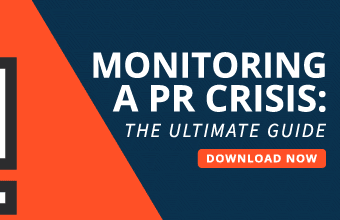Businesses around the globe have struggled through handling remote workforces in a trial-and-error fashion since the COVID crisis began, with some companies having more success than others. New research from employee success platform Peakon now finds that 19 percent of the global workforce feel their notions about their productivity and workload are not on the same page as their employers.
The firm’s new report, How Employees and Organisations are Responding to COVID-19, comprises nearly 500,000 survey responses from employees worldwide, revealing that employees are most concerned about their productivity and workload being misunderstood by their managers. Globally, nearly one in five is critical of their employer’s approach to productivity during the crisis.
Respondents noted a pressure to work harder and longer hours
An analysis of the comments made by employees found that “hours” and “pressure” were among the top five most commonly used words.
While employees appear to approve of measures taken by their employer to protect their physical health during the pandemic, many are still looking for greater understanding and support around their mental health. Of the employees who criticize their employer’s response to productivity, 12 percent explicitly mention health and mental health issues—commonly using words like “stress,” “anxiety” and “pressure.”
Respondents spoke of companies being “out of touch” with the stress and anxiety employees are currently feeling as they attempt to work during a crisis
Others were keen for their employers to understand that—far from being a prolonged vacation—this extended period of working from home represents a violent change, impacting many parts of their lives.
Terms like “pulling weight” and not “slacking” also occur frequently in the employee comments. This suggests a lack of trust among some managers, and employees feeling they need to demonstrate how much they are working.
Nearly one in ten (8 percent) critical respondents raised concerns linked to family obligations and their position as primary caregivers. A desire for more flexible hours to help support childcare and home schooling was noted, along with a need for managers to better understand individual situations.
Women were more critical than men on this topic of understanding productivity and workload
This suggests that traditional gender roles are continuing to play out for those still in lockdown, with women carrying more of the caring responsibilities.
“There’s a disconnect between employers and employees around what’s feasible in the current situation, and this must be addressed. Employers need to remember that this is not a typical ‘work from home’ scenario, and most employees won’t have had a proper break or holiday in recent months,” said Peakon CEO and co-founder Phil Chambers, in a news release.
“Business leaders and managers should also be cognizant of the pressure some workers are feeling now to work harder and produce even more in a bid to prove their worth, concerned about their job security,” he added. “Remote working is not going away anytime soon, especially as many organizations are taking a phased approach to getting people back into the workplace.
But monitoring employees’ productivity is not the answer
It will only compromise the trust employees have in their employer.
“This is the time to ask employees how they are feeling, and understand their ever-changing needs and expectations. Give them autonomy and flexibility they need. Be empathetic. Reassure your teams that—with everything going on—of course it’s fine to have the odd slow or unproductive day. This is the only way to make sure employees can work to their best ability now, and in the future.”
Based on the concerns exposed by the data, Chambers advises businesses to take the following steps:
-
Listen to employees
It seems simple, but all too often businesses fail to ask employees for their opinion on what does and doesn’t work for them. Not all requests can be acted upon immediately – but maintaining a conversation with employees regarding what is workable and what is not will ensure they have a voice and feel heard.
-
Be flexible
According to the findings of the firm’s Employee Expectations Report, employees worldwide are crying out for more flexibility. Often this is feasible. Allowing employees to flex their hours around caring responsibilities, free from judgement, can help them achieve a better work life balance, which is important to support their mental health.
-
Be realistic
Business productivity may dip in the coming months as some employees remain working remotely and others return to the workplace. Communication will be key, but monitoring employees won’t help. It will only demonstrate a lack of trust in them and encourage them to look elsewhere when the climate improves. Instead, business leaders should work with employees to overcome barriers to their productivity where possible. Those that do will be rewarded with longer term loyalty and hard work.











